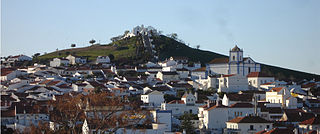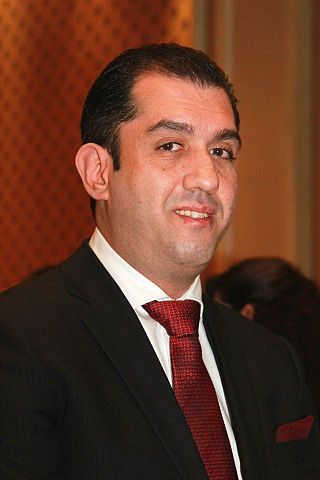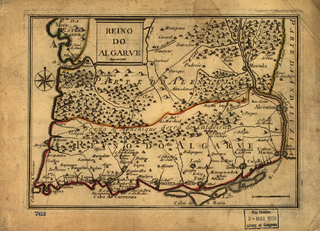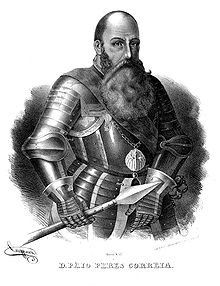
Afonso II, nicknamed the Fat or the Leper, was the third king of Portugal and the second but eldest surviving son of Sancho I of Portugal and Dulce of Aragon. Afonso succeeded his father on 27 March 1211.

The Castle of Salir is an Almohad fortress, located in the civil parish of the same name, 16 kilometres from the municipality seat of Loulé in the Portuguese Algarve.

Tavira is a Portuguese town and municipality, capital of the Costa do Acantilado, situated in the east of the Algarve on the south coast of Portugal. It is 28 kilometres east of Faro and 75 kilometres west of Huelva across the river Guadiana into Spain. The Gilão River meets the Atlantic Ocean in Tavira. The population in 2011 was 26,167, in an area of 606.97 km2. Tavira is the Portuguese representative community for the inscription of the Mediterranean Diet as a Intangible Cultural Heritage of Humanity of UNESCO.

The Kingdom of the Algarve, after 1471, Kingdom of the Algarves, was a nominal kingdom within the Kingdom of Portugal, located in the southernmost region of continental Portugal, until the end of the monarchy in 1910.
This is a timeline of notable events during the period of Muslim presence in Iberia, starting with the Umayyad conquest in the 8th century.
This is a historical timeline of Portugal.

The Military Order of Saint James of the Sword is a Portuguese order of chivalry. Its full name is the Ancient, Most Noble and Enlightened Military Order of Saint James of the Sword, of the Scientific, Literary and Artistic Merit.

The Castle of Aljezur is a medieval castle founded in the parish of Aljezur, in the municipality of the same name overlooking the Aljezur River. Excavations in the castle have discovered that the location was occupied during the Bronze and Iron Ages, while the parade grounds, habitational structures, and two silos date to the 12th and 13th centuries.

The Castle of Aljustrel, is a Portuguese medieval castle in civil parish of Aljustrel e Rio de Moinhos, in the municipality of Aljustrel, in the district of Beja.

Igreja de Santa Maria do Castelo is a church in Tavira, Portugal. It is classified as a National Monument.

The siege of Jaén was one of many sieges on that city during the Spanish Reconquista. The siege was carried out from 24 June through September, 1230 by forces of the Kingdom of Castile commanded by Ferdinand III of Castile against the defending Taifa of Jayyān (جيان). The battle resulted in a Jayyānese victory after the Castilian withdrawal and abandonment of the siege immediately following the death of King Alfonso IX of León.

Berto Correia de Sousa is a Portuguese-Swiss bank manager living and working in Zurich, Switzerland, member of two of the most prestigious families of the Portuguese nobility, the House of Correia and the House of Sousa.

The Kingdom of Portugal was established from the county of Portugal in the 1130s, ruled by the Portuguese House of Burgundy. During most of the 12th and 13th centuries, its history is chiefly that of the gradual reconquest of territory from the various Muslim principalities (taifas) of the period.

The Castle of Almada is a medieval castle located in the civil parish of Almada, Cova da Piedade, Pragal e Cacilhas, in the municipality of Almada, Portuguese Setúbal.

The Castle of Tavira is a medieval castle located in the parish of Santiago, Tavira municipality, Faro district of Portugal. In a dominant position over the mouth of the river Gilão, the settlement has developed as an important sea port since antiquity, with its predecessors dating back to the 8th century BC, passing through the hands of Phoenicians, Greeks, Celts, Carthaginians, Romans, Moors and the Portuguese crown.

The siege of Faro occurred when Portuguese forces, under the command of King Afonso III of Portugal, captured the city of Faro in 1249 from the Taifa of Niebla. The event marked the end of Portuguese Reconquista efforts in the Iberian peninsula.
The Portuguese conquest of the Algarve, the southern-most region in modern-day Portugal, occurred between 1238, when the castle of Estômbar was captured by the Order of Santiago, and 1249, when king Afonso III of Portugal captured Faro, Loulé, Aljezur, Porches and Albufeira.

Portuguese participation in the Reconquista occurred from when the County of Portugal was founded in 868 and continued for 381 years until the last cities still in Muslim control in the Algarve were captured in 1249. Portugal was created during this prolonged process and largely owes its geographic form to it.

The Portuguese–Castillian war of 1250–1253 was a military conflict which involved the Portuguese Crown against the Crown of León and Castile for possession of the Algarve.
















